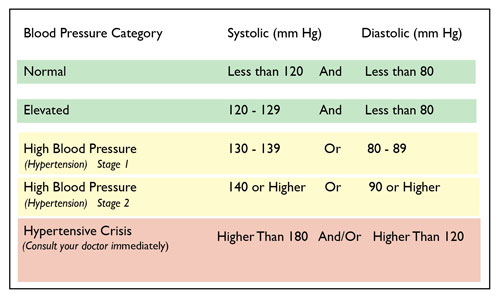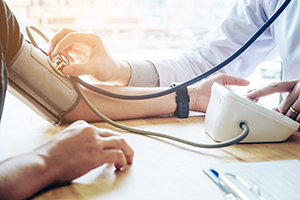10 things to know about changing blood pressure recommendations
Family Medicine
CentraCare Health - Melrose Clinic
 A little over a year ago, the American Heart Association (AHA) and American Medical Association updated their blood pressure recommendations. As a result, millions of Americans who previously were considered as having “prehypertension” are now identified as having high blood pressure. To view the updated categories, see the table below.
A little over a year ago, the American Heart Association (AHA) and American Medical Association updated their blood pressure recommendations. As a result, millions of Americans who previously were considered as having “prehypertension” are now identified as having high blood pressure. To view the updated categories, see the table below.
In a world where medical news always is changing, it’s easy for patients to be confused about what this change means and what to do about it. Here are a couple of immediate takeaways:
- High blood pressure remains a serious problem. Having high blood pressure increases your risk of having a heart attack, stroke, chronic heart failure and kidney disease. It also can cause vision loss or sexual dysfunction in both men and women.
- High blood pressure is common. Nearly half of American adults have the condition.
- Many with high blood pressure are unaware they have it. This is the case in about 20 percent of those with the condition. High blood pressure is often called the “silent killer” because it doesn’t have any warning signs. And the damage it causes to your body is often not reversible. The only way to know if you have it, is to take your blood pressure regularly.
- Genetics and age play a role in having high blood pressure. High blood pressure runs in families and, in general, one’s blood pressure rises as you get older.
- But there’s lots you one can do to control your blood pressure. Smoking, not having a healthy diet, consuming alcohol and not exercising also increases your risk of having high blood pressure. Making healthy changes in your lifestyle to lessen or eliminate these can make a big a difference in lowering your risk.
- Reducing the amount of sodium (salt) you consume also can make a big difference in reducing high blood pressure. The AHA recommends people eat no more than 2,300 milligrams of sodium daily, but the average American exceeds that amount by more than 1,000 each day. Being mindful of the amount of salty foods you eat and reducing them from your diet. The following foods are some of the most common sources of salt.
- Breads and rolls
- Pizza
- Soup
- Cold cuts and cured meats
- Poultry
- Sandwiches
- Knowing what your blood pressure is and consistently checking it is important. Whether it’s going to your health care provider’s office, checking it at the grocery story and/or buying a monitor for your home — there’s lots you can do to so you “know your numbers.”
- Talk with your health care provider if you have a family history of high blood pressure or heart disease or if you have been identified as having high blood pressure. Together you can work with your provider to make a plan to help you improve.
- If you have been identified as having high blood pressure, your provider still may not necessarily use medications to treat it. Depending on your individual health, your provider may opt for just making lifestyle changes and monitoring changes over time. But you won’t know unless you make an appointment to see your provider.
- Getting an annual physical exam can help detect changes in your health, including if you have developed high blood pressure. If you don’t have a primary care provider, you can review this list of those currently accepting patients. You also can text, chat online or call CentraCare Connect to help review all of your options.
